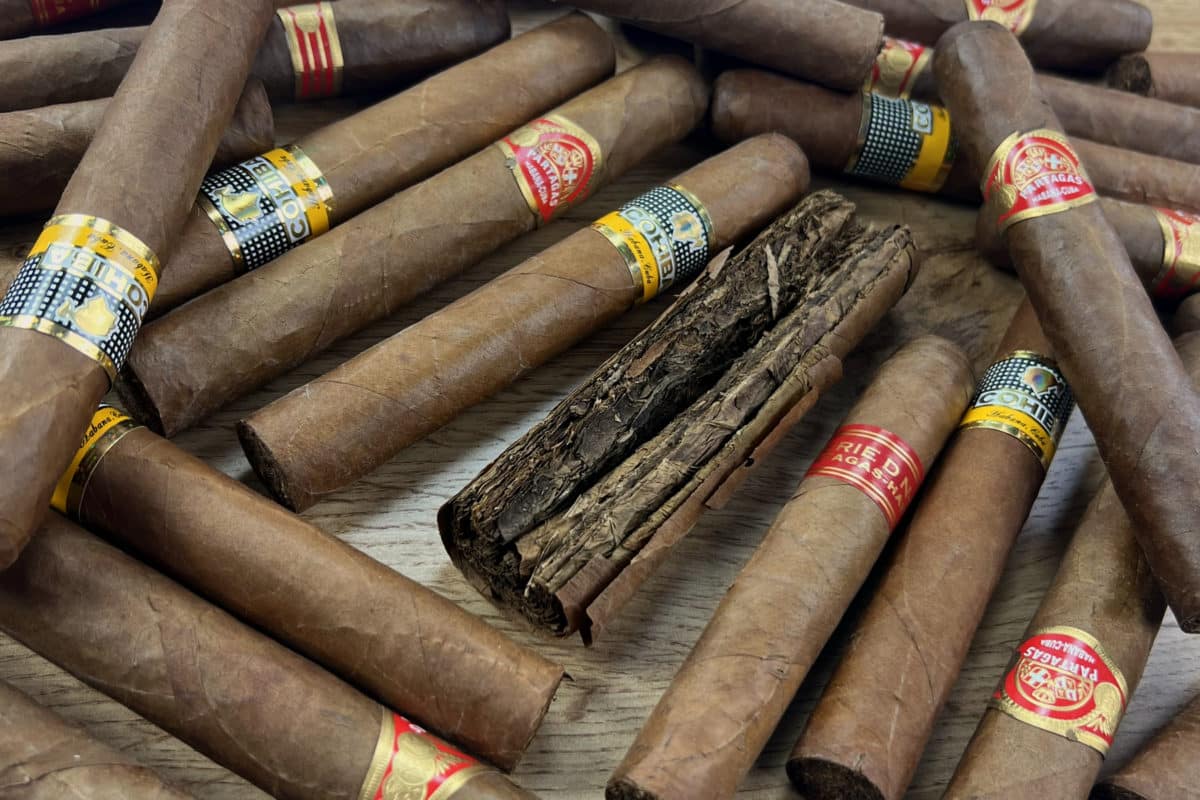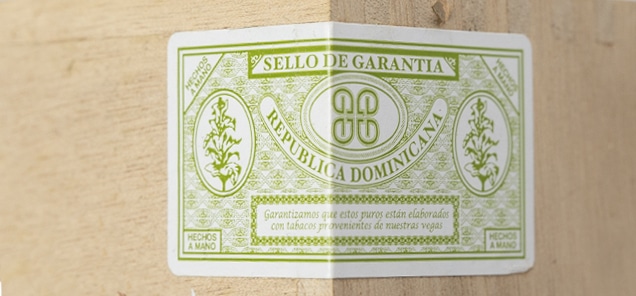L'académie du cigare, All about cigars
Counterfeit cigars: how to recognize them?
How can you be sure these are real cigars? That's probably the question you're asking yourself if you come across this article! In a complicated economic and logistical context, the market for counterfeit cigars, Cuban or otherwise, is getting bigger and bigger. Aficionados looking for bargains run the risk of being duped into buying fake cigars.
Let's take a look at some simple and useful tips on how to recognize counterfeit cigars, and even better, how to avoid buying them in the first place.
What is a counterfeit cigar?
First of all, we need to define what a counterfeit cigar is. By default, a counterfeit cigar is an imitation of an official cigar supplied by the producing brand. These cigars, which are not made by the producing brand, are therefore not authentic. They are not made from the original noble tobaccos, but rather from low-grade tobaccos from downgraded production zones, or from production zones in countries that have nothing to do with the original production zones.
What's more, rolling techniques are not the same, and inevitably, quality and taste pleasure are not the same. The most mediocre counterfeit cigars are made with short tripe, often resulting in extremely soft cigars with a soft body.
Some counterfeiters don't hesitate to add glue to the filler to give it physical consistency and mimic the original cigar. Needless to say, this type of product is extremely dangerous to health.
Fake cigars look legitimate on the outside and have rings that are surprisingly similar to authentic ones. Appearances may be perfect, but what's inside is quite different.
According to some experts, galera workers collect the day's tobacco offcuts to combine with other plants to make cigar tripe.
This low-grade tobacco is stolen from the factories themselves, and then enters counterfeiting networks in the countries of production or in third countries, via smuggling networks.
Not to mention the fact that it can contain things like hair, dust and insects found on the ground during the clandestine collection of tobacco that has fallen to the ground in factories.
There are also several types of counterfeit cigars:
- Fake cigars in fake boxes
- Fake cigars in real boxes
- Fake cigars in packaging different from the original.
- Fake cigars in bundles
The market for counterfeit cigars is very large worldwide. It feeds mafia networks, devalues original brands and the quality of their products, misleads consumers, and can potentially be dangerous to health.
Why are there fake cigars on the market?
The answer to this question is relatively simple. Demand for authentic cigars is outstripping supply, especially for Cuban cigars. This very high demand contributes directly to the shortage we're currently experiencing, as producing countries are unable to supply enough cigars for everyone. Because of this very high demand, combined with the hope of making juicy profits in record time, smuggling networks have been operating for many years, exploiting both the popularity of these cigars and the credulity of buyers to sell fake cigars to aficionados in search of sought-after products.
How to avoid counterfeit cigars
The golden rule of cigar buying
Before discussing the various methods of detecting counterfeits, it's important to understand how to avoid buying fake cigars.
It's actually quite simple. No matter where you are in the world, the best advice you can apply is this: only buy your cigars from an official retailer authorized by the brands and the sole importers of said brands.
Don't fall for the tempting bargains you see on the Internet, second-hand cigars or cigars sold on the street. The best way to avoid any kind of scam is to buy directly from an official retailer.
When the price is too attractive, especially on premium or ultra-premium products, you'd be forgiven for thinking that the buyer is the sucker. A box Cohiba Siglo 6 cabinet of 25 cigars sold for 550 chf is absolutely impossible in the official network. It has to be a scam.
Knowing this, counterfeit cigar sellers are no longer content to sell fakes at knock-down prices, but set a price close to the retail price to avoid any doubt in the buyer's mind. The conclusion is even more painful for the fish who took the bait.
Techniques for spotting a fake cigar
Well, now that you know the aficionado's golden rule, let's take a look at how to spot a fake cigar.
Non-Cuban cigars
The warranty seal
No matter what country your cigars come from, the boxes have a brand-specific stamp that you need to know about.
For example, in the case of Dominican cigars, you'll always find a textured label as a guarantee seal on the side or top of the box.
Before you buy your cigar box, take the time to search the internet for the authentic box visual and the labels you should expect.
The similarity between cigars
To identify whether the contents of a cigar box are genuine, you'll need to analyze each cigar one by one. At this stage, it's interesting to compare whether they are similar in weight, size and color. There may be slight differences, and that's normal: cigars are organic, hand-made products, so they can't be exactly the same.
The price
Fake cigars cost less to produce than genuine ones. If the price of the box of cigars you want to buy seems strangely low, beware. This is often the main reason for buying fake cigars: aficionados think they're getting a good deal. Remember the golden rule: only buy from official retailers.
Cuban cigars
The warranty seal
The seal features a barcode and a hologram. The seal is a rectangular label, with the barcode at the right end and the hologram at the left. The seal is positioned on the left-hand side of the lid, leaving a margin of 3 to 6 millimeters between it and the edge. It should then extend down the front edge, preferably reaching halfway up. You can authenticate a box using the product code on the seal, directly here : Authenticity check.
The Cuban habanos seal is printed on synthetic adhesive paper, which is destroyed when removed from the box. It is therefore impossible to reattach it to another box. The seal also features protection against photocopying, as well as optical-effect motifs that are impossible to reproduce.
The holographic label features a two-color inscription that appears in 2D and 3D, and the seal also includes a microdot that only a laser scanner can read. The barcode contains technical and commercial information, and each barcode is registered in a database managed by Habanos SA.

Local import guarantee
Habanos (Cuban cigars) are protected by local import guarantees in the form of labels created by official importers who have obtained Habano SA approval to sell Cuban puros in a specific geographical area.
Cigar boxes sold in La Casa del Habano stores bear the Habano SA guarantee seal and holographic label, and do not need these local import guarantees, as they belong to the Habanos brand.

Designation of origin
In 1994, the Cuban authorities introduced a new law requiring exported cans of Habanos to carry a Denomination of Origin label.

The markings on the box
In 1960, Cuba decided to print the words "Hecho en Cuba" (literally, "Made in Cuba") on the outside of habanos boxes. Printing was done in the old-fashioned way, since cigar brands had to adopt the branding technique.
Since 1989, boxes of Cuban long-filler cigars have also been marked "Totalmente a mano" (totally hand-made). The marking is made just below the inscription "Hecho en Cuba". This measure does not apply to machine-made cigars.
Then, in 1994, an additional inscription became mandatory: Habanos s.a. This acronym is placed just above the first. In Cuba, Habanos SA is responsible for exporting and marketing Cuban cigars worldwide. Between 1985 and 1995, it was known as Cubatabaco before being renamed.

Dates and factories
Habanos production dates and factories are indicated on the boxes by means of a secret code and a boxing date printed with a stamp. Only Habanos SA and its authorized distributors can decipher this code, which provides information on the factory that made the cigars.
Dating only concerns the month and year, and began to be applied in 2000 (00). Before 1985, these notations did not appear on the boxes, and between 1985 and 1999, they were coded. Months are abbreviated in Spanish, for example "ENE" for January ("enero" in Spanish). Knowing the production date is important as habanos age and gain in quality, particularly in terms of organoleptic characteristics. You can also check the authenticity of habanos on the official Habanos website.

Since the virtual disappearance of discount prices and other special discounts, whether real or disguised, particularly on premium and ultra-premium Cuban cigars, and the subsequent increase in the price of cigars from all regions, the cigar counterfeiting "machine" has overdriven counterfeit production, seeing the drastic reduction in supply as a tremendous opportunity to make even more money than in the past.
The discount buying of the past, considered by some consumers to be a smart purchase, has turned into a nightmare for some aficionados who have accumulated substantial cigar stocks of up to several hundred thousand Swiss francs or even several million. In fact, it was when they wanted to revalue their precious stash of cigars that the expert broke the bad news. "Dear Sir, the cigars you have purchased are fakes! Impossible to resell on pain of being put under the counterfeit resale article of law, and complicated to smoke!
Once again, rely on your certified dealer, approved by the importers and cigar brands in each country.


